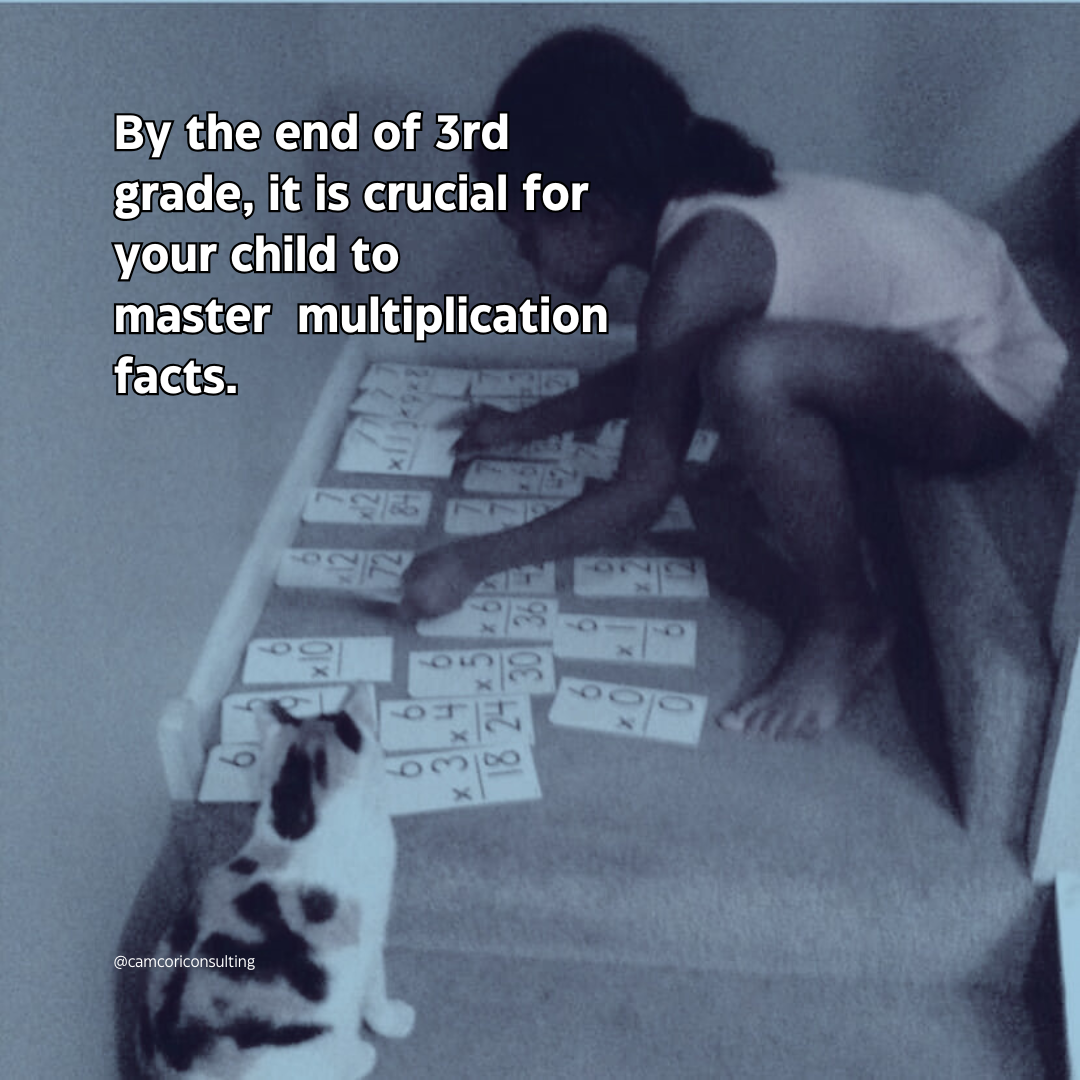Mastering Math by the 3rd Grade
3rd Grade Corinne teaching her cat, Calico.
As the school year progresses, there’s one milestone your child should not miss—mastering multiplication facts. By the end of 3rd grade, it's crucial for your child to recall these facts as quickly as they can say their name, their address, your cell phone number (and yes, they really should know this by heart), or even the lyrics to Kendrick Lamar’s “Not Like Us.”
Why is this so important? Many students who find themselves struggling with math in later years often missed grasping key concepts early on. Multiplication facts are not just numbers to memorize; they are the building blocks that support higher-level math subjects like Algebra, Trigonometry, and Calculus. These are the very subjects that often become stumbling blocks for many students as they progress through their high school and college.
Lauryn Hill sings, “It could all be so simple, but we'd rather make it hard.” This perfectly captures the essence of early math education. Mastering multiplication by the end of 3rd grade should be straightforward, yet often, we fail to prioritize these fundamental skills, complicating future learning unnecessarily.
Let's ensure our children have these essentials down pat, just like their favorite song lyrics, so they are set up for success in their future academic endeavors. Remember, a strong foundation in multiplication is not just about making math easier; it’s about making future learning possible.
Here are three quick tips to help your child master multiplication facts:
Flashcard Fun: This photo is a fun flashback of my daughter, Corinne, in 3rd grade, diligently practicing and teaching her multiplication facts to our cat, Calico! Now, as a senior atttending Spelman College with a full scholarship, I believe her early dedication to mastering these basics played a crucial role in her academic success. Turn it into a fun challenge or a quick game to beat the clock!
Apply It: Show how multiplication facts are part of everyday life. Have your child help calculate total prices while shopping or double a recipe for more servings.
Daily Drills: Set aside just 20-25 minutes each day for multiplication practice. Consistency is key to turning these facts into second nature.
Let's ensure our children have these essentials down pat, just like their favorite song lyrics, so they are set up for success in their future academic endeavors. Remember, a strong foundation in multiplication is not just about making math easier; it’s about making future learning possible.
Join our email list for more tips and strategies! Forward to a friend! Join Now!


